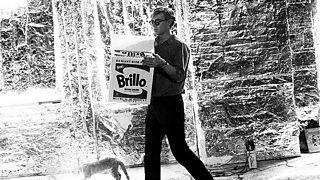BBC Four Goes Pop: Idents by Peter Blake, Derek Boshier & Peter Phillips
25 August 2015
Over fifty years since Ken Russell’s kaleidoscopic 1962 documentary Pop Goes the Easel, which charted the rise of a group of emerging young stars of the Pop Art movement, BBC Four has invited three of the programme’s starring artists - Peter Blake, Derek Boshier and Peter Phillips - to create channel idents for BBC Four Goes Pop! inspired by the theme of Pop Art.
Watch these pieces of visual art below alongside Q&As with the artists.

BBC Four Goes Pop: Ident by Peter Blake
A specially produced, original channel identity by Pop Artist Sir Peter Blake.
Peter Blake Q & A
Q. What inspired you to create your BBC Four ident?
When Pop Art first happened in the mid 1950s, my aim was to make Art available and populist
A. I talked to my daughter Rose, who is more conversant with animation, and she agreed to take on the project with animator Andy Baker.
Rose found an image from an illustration I had made in the 1950s, of a girl with lots of thought bubbles coming out of her head. This sat very nicely with the BBC Four ethos, being inquisitive, thoughtful and innovative.
In these bubbles we substituted the images I had originally produced with found objects from my studio.We loved the idea of black and white television and wanted to give the ident a sixties mood without being too retrospective.
Q. Do you think the energy and vision of Pop Art can be found in the art world today?
A. When Pop Art first happened in the mid 1950s, my aim was to make Art available and populist. Certainly the Y.B.A. artists picked up on the energy and vision that we had in the 1950s and '60s.
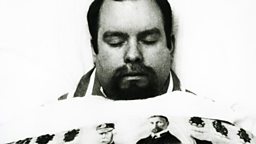
-
![]()
Your Paintings
Browse a selection of artworks by Peter Blake
Derek Boshier
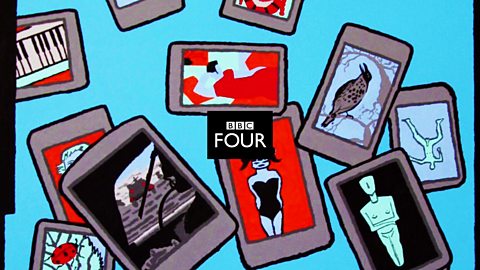
BBC Four Goes Pop: Ident by Derek Boshier
A specially produced, original channel identity by Pop Artist Derek Boshier.
Derek Boshier Q & A
Q. Which three words would you use to describe Pop Art?
Pop Art has become a continuum, probably influencing societally more than any other art movement in the 20th / 21st centuryDerek Boshier
A. Popular Culture Appropriation
Q. What inspired you to create your BBC Four ident?
A. The idea of tackling the given brief of 40 second film and the continuation of my current film making activities. Also I had always wished I could make a TV commercial... still do.
Q. You were featured in Ken Russell’s 1962 documentary Pop Goes the Easel, were you aware that in the early '60s you were living through a special time in British art and were at the centre of it?
A. No.
Q. In Pop Goes the Easel, you were featured alongside three other exceptional young talents, Peter Blake, Derek Boshier and Pauline Boty. What did you admire in their work? Was there ever any rivalry between you?
A. Yes I certainly admired their work and we were friends, and no never any rivalry - in fact encouragement and shared excitement. We were equally excited about the popular culture we were making the art from, and making art out of what we were living.
Q. What did Pop Art have to say about the world?
A. That the everyday world around you is exciting. Popular culture is exciting and art can even be made about it.
Q. Are terms like Pop Art useful in art, can a title ever truly capture a movement in all its breadth?
A. Useful as a start.
Q. Is there an artist or artwork which has particularly inspired you in your career?
A. Just too many and too diverse to list.
Q. Do you think the energy and vision of Pop Art can be found in the art world today?
A. Yes, certainly, Pop Art has become a continuum. Probably influencing societally more than any other art movement in the 20th / 21st century.
Clips
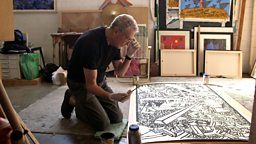
-
![]()
Your Paintings
Browse a slideshow of paintings by Derek Boshier
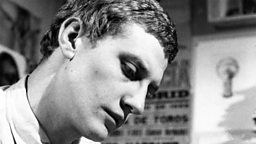
Peter Phillips

BBC Four Goes Pop: Ident by Peter Phillips
A specially produced, original channel identity by Pop Artist Peter Phillips.
Peter Phillips Q & A
Q. Which three words would you use to describe Pop Art?
I’ve never seen my paintings move before, and this brings them to life in a different way
A. There are so many words I can think of, it’s nearly impossible to boil them down to three. I suppose the first three that come to mind are: Elusion, Delusion & Transformation.
Q. What inspired you to create your BBC Four ident?
A. Because I’m currently in Australia, I had to work with what I have available from the period with me here in Australia. I wanted to stick with period pieces and the evolution of my work. Plus, I like the way the colour transformation goes from black-and-white to colour, and since I’ve never seen my paintings move before, this brings them to life in a different way.
Q. You were featured in Ken Russell’s 1962 documentary Pop Goes the Easel, were you aware that in the early '60s you were living through a special time in British art and were at the centre of it?
A. I had no idea at the time because I was too busy living and experiencing it. Looking back, it was a special time, but who’s to say today won’t look that way in the future?
Q. In Pop Goes the Easel, you were featured alongside three other exceptional young talents, Peter Blake, Derek Boshier and Pauline Boty. What did you admire in their work? Was there ever any rivalry between you?
A. They each had an individual identity. I respected that, and still do. There was never any rivalry. It was about mutual self-respect.
Q. What did Pop Art have to say about the world?
A. It didn’t say anything about the world. It was an interpretation of the world through our, the artist’s, eyes. So in a way, it was merely a reflection of the world. Personally, I visualized and aesthetically wanted to put together images of a collective society and, as I think of it, a spanner in the machine.
Q. Are terms like Pop Art useful in art, can a title ever truly capture a movement in all its breadth?
A. I don’t think so. As stated earlier, I strongly respect individualism in art.
Q. Is there an artist or artwork which has particularly inspired you in your career?
A. First, I never thought of my art as a career. It was my drug, my joy. An addiction of sorts, but not a career. Regarding my inspiration, in school, they were teaching us still life and classical painting. So in a way, they were my antecedents, but what really influenced me was living in London during that time. As Bob Dylan said, the times were ‘a changing.
Q. Do you think the energy and vision of Pop Art can be found in the art world today?
A. Strong energy and bold vision come through when an artist is free to do their own thing. Today’s western culture makes it too easy to pull people into groupthink. I see it in rare cases, but my advice to artists today would be not to fall into the downgrading of the individual spirit.

-
![]()
Your Paintings
Browse a selection of artworks by Peter Phillips
Making the Ident
BBC Arts commissioned four recent MA graduates from the RCA to animate Peter Phillips' ident: Rory Waudby-Tolley; Diana-Nicoleta Gradinaru; Rosanna Wan; Perrie Murphy.
Pop Goes the Easel
-
![]()
Archive Pop
Watch Ken Russell's Pop Goes the Easel.
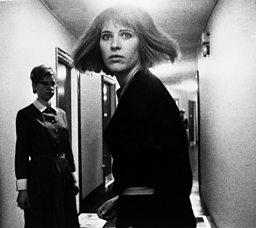
Pop Art Features
-
![]()
The Politics of Pop Art
A dissenting view from the global artists represented at The World Goes Pop exhibition at Tate Modern.
-
![]()
Pop Art's Road Trip
Alastair Sooke on the stark, understated gas station photographs of Ed Ruscha.
-
![]()
Did Scottish artists invent Pop?
Can Pop Art really trace its origins to the work of a couple of artists from Scotland?
-
![]()
Sun Kings
Stephen Smith compares the courts of Andy Warhol and the original Sun King, Louis XIV - with the Factory as a 1960s Versailles.
-
![]()
Pop Idents by Pop Icons
Watch the BBC Four Goes Pop! channel idents by Peter Blake, Derek Boshier & Peter Phillips.
-
![]()
What's Andy Doing Right Now?
Find yourself in the midst of a typical day for Pop Artist Andy Warhol in the mid-1960s.
-
![]()
Warhol's Polaroids
The genius behind the camera that enabled Andy's instant celebrity obsession.
-
![]()
The Power of Desire
Controversial British Pop Artist Allen Jones is the guide around his Royal Academy exhibition.
-
![]()
Dividing Opinion
A Career in Quotes: What the critics said about controversial British Pop Artist Allen Jones.
-
![]()
24 Hours with Andy Warhol
Follow Andy and his entourage as they tour London in 1970, meeting David Hockney and film critic Dilys Powell.
-
![]()
Cheese!
A fascinating look inside The Factory in 1965, as filmmaker and activist Susan Sontag visits while Andy is filming.
-
![]()
Cover Star
When Everyone Could Own a Warhol: Andy Warhol's 1950s album covers for hip jazz labels such as Blue Note.
-
![]()
Superstars & Silver
The Factory 1964-1970: Billy Name's iconic images of Warhol's Silver Factory, with the Velvets, Nico, Warhol superstars & Dali.
-
![]()
Heroes of German Pop
William Cook on the exquisite colours of German Pop at an exhibition in Frankfurt.
-
![]()
German Pop: In pictures
Artworks from the bold and brilliant pioneers who shaped Germany's 1960s pop art scene.
-
![]()
Transmitting Warhol
A video tour of last year's Andy Warhol exhibition at Tate Liverpool.




















